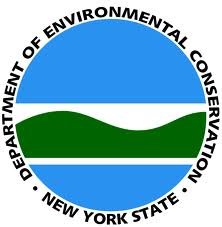Oyster Bay, NY - September 6th, 2013 - The New York State Department of Environmental Conservation (DEC) today announced that the harvesting of shellfish, other than oysters, from the normally certified waters in the eastern portion of Oyster Bay Harbor is permitted, effective at sunrise, Saturday, September 7.
On June 29, approximately 4,800 acres of shellfish lands in Oyster Bay Harbor and Cold Spring Harbor on the north shore of Long Island were closed for the harvest of shellfish by DEC as a precautionary measure to protect public health. This closure was implemented following reports of shellfish-related illnesses that were associated with consumption of oysters and hard clams harvested from these areas. The illnesses were caused by the naturally-occurring, marine bacteria Vibrio parahaemolyticus (Vp), as confirmed by the state Health Department.
When ingested, Vp may cause diarrhea, nausea and vomiting, often accompanied by abdominal cramps, fever and chills. Symptoms usually occur within 24 hours of ingestion and full recovery may take up to a week. More severe illness may occur in people with compromised immune systems or underlying chronic medical conditions. To greatly reduce the risk of illness from Vp in shellfish, all shellfish (clams, mussels, oysters and scallops) should be thoroughly cooked.
Over the last few weeks, DEC collected hard clam samples from the affected area of Oyster Bay Harbor for testing at DEC's East Setauket laboratory. The results of the tests showed that Vp was no longer present in hard clams at levels that are considered hazardous to human health.
Based on these findings, DEC has partially rescinded the closure order that was implemented on June 29. The harvest of shellfish, other than oysters, is again permitted in approximately 1,100 acres of the normally certified shellfish lands in the eastern portion of Oyster Bay Harbor.
The harvest of oysters continues to be prohibited in approximately 1,100 acres of shellfish lands in that portion of Oyster Bay Harbor lying easterly of a line extending from Brickyard Point on Centre Island to the northernmost rock jetty lying north of the Town of Oyster Bay boat ramp in Theodore Roosevelt Memorial Park. Oyster harvest also remains prohibited in 2,400 acres of shellfish lands in Cold Spring Harbor, lying south of a line extending easterly from Rocky Point on Centre Island to Whitewood Point on Lloyd Neck.
To reduce the potential for growth of bacteria in shellfish after they are harvested and thereby minimize the risk of future illnesses, DEC reminds shellfish harvesters to use good post-harvest handling methods for controlling temperature, including:
- Keeping shellfish shaded, out of direct sunlight
- Keeping shellfish on ice or spraying with cool water from a certified area
- Never putting shellfish in standing or stagnant water
- Getting shellfish into refrigeration within 5 hours of the start of harvest.
The DEC advises commercial harvesters who take shellfish from the re-opened areas of the harvest area known as NS-2 to label shellfish tags with the harvest area "NS2 -Cold Spring Harbor" or "NS2-Oyster Bay Harbor" as appropriate.
The DEC will continue to collect and test oyster samples from the eastern portion of Oyster Bay Harbor to determine the level of Vp present in oysters. When the DEC, in consultation with the FDA, determines that Vp is no longer present in oysters at levels that are hazardous to human health, the remaining areas of eastern Oyster Bay Harbor and Cold Spring Harbor will be re-opened for oyster harvest.
Information about temporary shellfish closures is available through a recorded message at (631) 444-0480. That message is updated when changes are made to temporary closures. More information on Temporary Shellfish Closures can also be found on DEC's website.










